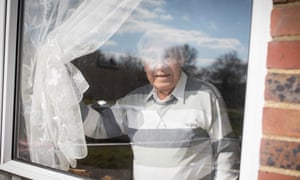When the UK entered its first lockdown, most people could still leave home for exercise or essential shopping, but those who had been identified as extremely clinically vulnerable were advised against going out at all.
As Frances Ryan tells Rachel Humphreys, this meant many disabled people becoming instantly isolated from their support networks or local services and having to fall back on their family or friends. The guidelines were not always well communicated, and help for those shielding varied wildly by location.
Shamima Akhtar describes how she felt increasingly trapped alone in her high-rise flat as she watched infection rates rise. Even when the government eased restrictions in the summer, she did not feel safe outside her home.
John Gillibrand explains how his son Adam, who has autism, has not been officially shielding in his residential home but has nevertheless been subjected to the same restrictions as other shielders. But this unofficial status became a problem when it came to the vaccine rollout and he discovered Adam was not high on the priority list – despite the fact that people with learning disabilities have a far higher risk of dying of Covid than the general population.

Photograph: Alicia Canter/The Guardian
Support The Guardian
The Guardian is editorially independent.
And we want to keep our journalism open and accessible to all.
But we increasingly need our readers to fund our work.
This content first appear on the guardian
